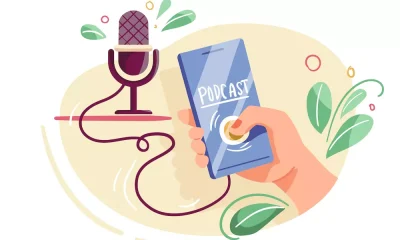Social Media
Work Smarter, Not Harder, at Your Social Media Game: 6 Clutch Moves

Don’t take this the wrong way, but your social media game could almost certainly use some work.
No, you don’t have to quit your day job to manage your social media presence. Your work — likely the primary reason you’re trying to up your social media ante in the first place — is too important to throw by the wayside.
Take these relatively minor tweaks to heart and you’ll be well on your way to smarter, more efficient social media use. Some of these tips are platform-specific; others apply across the board. All have minimal barriers to entry — you can begin to put them to use this week, if time and motivation allow.
1. Use a Post Scheduling Tool
Do you grab your phone to blast out a tweet or share a particularly well-composed pic whenever inspiration strikes? There’s nothing wrong with the occasional opportunistic post, but you probably don’t have the time or bandwidth to keep up a steady stream during the workday.
That’s where a post scheduling tool comes in. Take 30 to 45 minutes at the beginning of the workweek — Sunday evening works well, if you can swing it — to schedule the next week’s posts, tweets, and shares across your entire social ecosystem. Then, get back to more important things.
2. Call Out Friends and Influencers
Spread the love by calling out friends with modest followings and household-name influencers alike. This serial entrepreneur’s LinkedIn page is a good illustration: one day, he’s giving props to an old friend for a life well lived; the next, he’s re-posting killer content from an industry peer.
No need to be over-the-top about this. Influencers, in particular, don’t like to see their feeds clogged with “little people” tagging and ‘@’ing them — many turn off alerts precisely to avoid being overwhelmed by such activity. Follow a general, low-key rule: if something makes you look twice, share it with your followers.
3. Regularly Post Short Videos
If a picture is worth a thousand words, a video’s value is incalculable. Some social platforms are tailor-made for video: see, e.g., YouTube, Twitter, and Instagram. Platforms without tight time constraints or small default window sizes work best — in other words, set up a YouTube channel if you haven’t already.
Outside YouTube, the ideal social media video is bite-sized — no more than 90 seconds — and features a clear, compelling thesis that tells the audience something it presumably didn’t know about you. Think of them as TV commercials without the sticker shock.
Save the long-form, highly produced stuff for YouTube and Facebook
Long or short, use social videos as lead generators for your website. If they’re compelling enough, your followers will share them with connections that may have no idea who you are — a fantastic first-contact opportunity, should you take it.
4. Host Occasional AMAs or Chats
Set aside 30 to 60 minutes every week, month or quarter for a candid, unvarnished chat with the general public. In the digital age, this concept arose on Reddit, where it’s known as the AMA: “ask me anything.”
Yes, this idea isn’t without risk. But, as long as you familiarize yourself with AMA best practices, confine your availability to a relatively small window, and maintain your composure no matter what happens, the benefits are likely to outweigh the drawbacks.
5. Share More Than You Reply
“Better to remain silent and be thought a fool than open your mouth and remove all doubt.”
Like most great quotes, this one is apocryphal. That its provenance is lost to the mists of time doesn’t cheapen its wisdom, though.
In the social media sphere, where slight misunderstandings often blow up out of all proportion, it’s best to maintain a low-key presence that leans heavily on sharing and re-posting non-controversial content that aligns with your public persona. Said content can be original or third-party; the most important thing is that it generate conversation, not controversy.
6. Always Track Your Mentions
The dreaded mention is a key analytic that deserves special attention.
Most social platforms have some variation on this metric. Whenever someone tags your personal or business handle in a comment, that’s a mention. Naturally, mentions span the full affect spectrum, from stomach-churningly negative, through millpond-neutral, to obsequiously positive.
Each type of mention is important, but it’s — unsurprisingly — the negative ones you really need to look out for. Use a tool like Mention (whose usefulness extends beyond the social mediasphere) to track the tenor and frequency of your mentions. You’ll know in real time when a derogatory peep surfaces and be that much better prepared to address it.
Keep One Ear to the Ground
You don’t have to be a social media guru to see that the social media landscape can change in the blink of an eye. In fact, if you don’t assume that the social media game is going to change with each passing quarter, you’re not going into this thing with your eyes open. (There’s a reason this article includes “2017” in the title — they have to write a new one every year.)
So — keep your eyes open and one ear to the ground. Stay up on the latest goings-on: algorithm tweaks, advice from proven social media influencers, policy and data use changes. Be humble enough to admit that you don’t have all the answers — and willing to commit to getting a little better at social media use every day.









